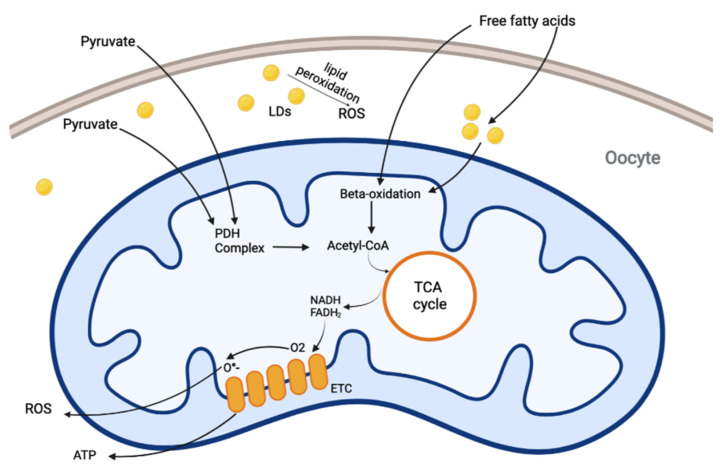Figure 1.
Mitochondrial pyruvate and fatty acid metabolism. Pyruvate from cumulus cells, follicular fluid, or culture medium enter the oocyte and is converted to acetyl-CoA by PDH complex. Free fatty acids are taken up into the oocyte to form an endogenous store in the form of lipid droplets (LDs). It is also possible that free fatty acids enter the mitochondria to undergo beta-oxidation. TCA cycle consumes acetyl-CoA and reduces NAD+ to NADH and FAD to FADH2. These factors are than oxidized by the electron transport chain to generate ATP through oxidative phosphorylation. The ETC can allow leakage of electrons back into the mitochondrial matrix, producing the superoxide radical (O2−). In the case of excess lipid intake, free fatty acids remain in the cytoplasm where they can generate lipid peroxides. A fine regulation of pyruvate and fatty acids metabolism is required to maintain energetic homeostasis, avoiding excess ROS production with negative effects on oocytes.

